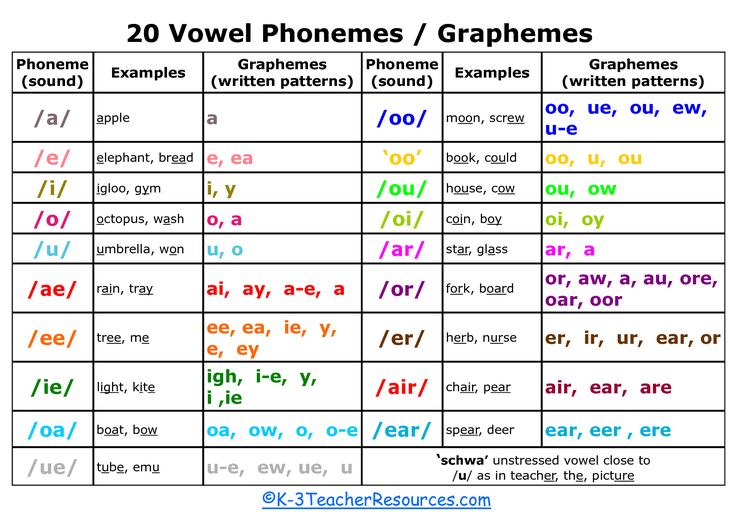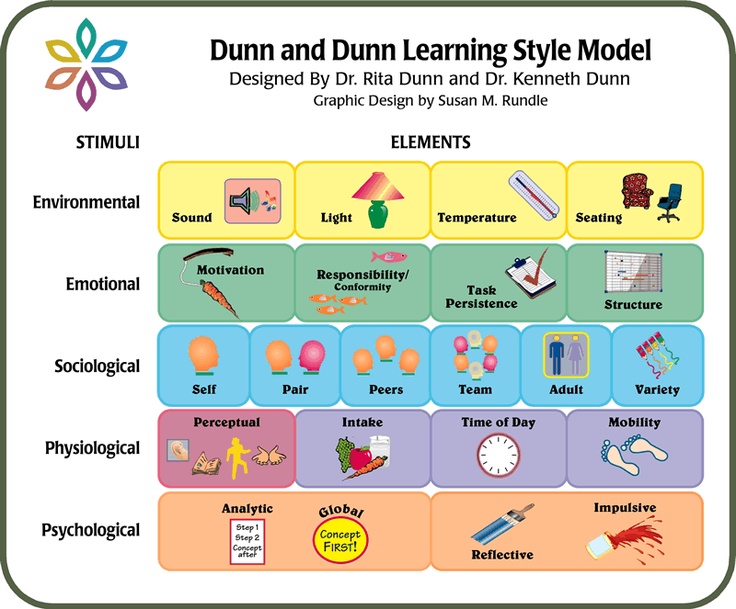Sid the science kid gravity
Sid the Science Kid: Gravity and Weightlessness
None Sid and his friends learn how gravity keeps us all from floating away. Sid can’t believe his eyes! At breakfast, his pancake looks smaller than Zeke’s, but they’re the same size! How can this be? It’s an optical illusion! Mom and Dad explain that sometimes your eyes and your brain play tricks on you and things aren’t always what they appear to be. But there’s something that causes Sid’s pancake to look smaller, like being on a larger plate than Zeke’s. Join Sid as he learns about different types of optical illusions, then see if you can find optical illusions around you. show full description Show Short DescriptionScience
Enjoy our collection of fun science stories for kids. With favorites like Sid the Science Kid and Hayley Rides into Space, you're sure to find stories your child will love.
view all
Robot in Space
Hayley Rides Into Space
My Terrific Spaceship
Sid The Science Kid: Reused Robot
Sid the Science Kid: Hello, Doggie
Sid The Science Kid: Rolie Polies
Sid the Science Kid: Optical Illusions
Sid the Science Kid: Gravity and Weightlessness
Sid the Science Kid: Primary Colors
Sid the Science Kid: Ants
Sid the Science Kid: States of Water
Sid the Science Kid: Pollination
One membership, two learning apps for ages 2-8.
TRY IT FOR FREE
Full Text
Hey, you're a scientist, like me! Come discover with Sid the Science Kid. Hey, everybody! We're gonna try something great! We're gonna do an experiment where we throw a ball all the way up into the clouds. Awesome! Yay! “Hey, well, I'm the strongest, so I'll throw the ball. Let's go!“ “Okay!“ “Are you ready, Gabriela? We all want you to throw the ball so high it never comes back! Ready? Set . . .“ “Whoa!“ “There it goes! Goodbye forever, ball!“ “Oooh, it's coming back down!“ “Uh-oh!“ “Aw, but Gabriela threw it so high in the air!“ “If you throw an object into the air, it will fall back to the ground because of gravity. Let's learn about it.“ “Yay!“ “We're gonna learn about gravity.“ “Gravity is the force that pulls all objects on Earth toward the ground. Now then, as you can see here in this picture, the force of gravity has the same effect on a ball, a person, or a car.“ “So, Teacher Susie . . .“ “Yes, Sid?“ “Is gravity there all the time?“ “Well, yes! Without gravity, we'd all be floating around in the air. “ “Aaaaahhhh!“ “But with gravity, even when you throw the ball really hard, it will come back dooown!“ “But what about things that never fall, like a feather that floats away?“ “Soap bubbles don't fall, either. What's that about?“ “Mmm-hmm.“ “Well, nothing floats forever. You see, the feather is very light, so the wind can carry it, and it will stay in the air for a while. But sooner or later, it will land. Gravity will bring the feather to the ground. Gravity also helps you slide down the slide on the playground.“ “Huh?“ “But I thought the slide works because it's slanted.“ “You have to climb up the ladder to the top . . . And slide down!“ “Yes, but what force enables you to slide, May?“ “Oh, um . . .“ “Oh, I know, Teacher Susie! When you're at the top of the slide and you're starting to slide down, you're still being pulled to the ground.“ “Uh-huh.“ “Whoa!“ “That's why you slide down! Gravity is what pulls you.“ “Good! Congratulations, Sid. That's exactly right!“ “Now all we have to do is try it.
“ “Aaaaahhhh!“ “But with gravity, even when you throw the ball really hard, it will come back dooown!“ “But what about things that never fall, like a feather that floats away?“ “Soap bubbles don't fall, either. What's that about?“ “Mmm-hmm.“ “Well, nothing floats forever. You see, the feather is very light, so the wind can carry it, and it will stay in the air for a while. But sooner or later, it will land. Gravity will bring the feather to the ground. Gravity also helps you slide down the slide on the playground.“ “Huh?“ “But I thought the slide works because it's slanted.“ “You have to climb up the ladder to the top . . . And slide down!“ “Yes, but what force enables you to slide, May?“ “Oh, um . . .“ “Oh, I know, Teacher Susie! When you're at the top of the slide and you're starting to slide down, you're still being pulled to the ground.“ “Uh-huh.“ “Whoa!“ “That's why you slide down! Gravity is what pulls you.“ “Good! Congratulations, Sid. That's exactly right!“ “Now all we have to do is try it. “ “I'll start at the top . . .“ “Alright, May, now let the force of gravity do the rest!“ “Whee!“ “Yeah!“ “May, do you like gravity?“ “It's cool!“ “Okay, Sid! Go!“ “Ooh, yeah!“ “Alright! Hooray for gravity!“ “Yeah!“ “Yay!“ “So cool!“ “Mom! Dad! Come here! I have something amazing to show you: I learned all about gravity today, and it was awesome!“ “Wow! Sounds great!“ “Look. I'm going to launch this penguin into the air, and it'll be pulled back down by gravity!“ “One, two, three . . . go, gravity!“ “Oh, hooray!“ “I'm a master of gravity!“
“ “I'll start at the top . . .“ “Alright, May, now let the force of gravity do the rest!“ “Whee!“ “Yeah!“ “May, do you like gravity?“ “It's cool!“ “Okay, Sid! Go!“ “Ooh, yeah!“ “Alright! Hooray for gravity!“ “Yeah!“ “Yay!“ “So cool!“ “Mom! Dad! Come here! I have something amazing to show you: I learned all about gravity today, and it was awesome!“ “Wow! Sounds great!“ “Look. I'm going to launch this penguin into the air, and it'll be pulled back down by gravity!“ “One, two, three . . . go, gravity!“ “Oh, hooray!“ “I'm a master of gravity!“
1
We take your child's unique passions
2
Add their current reading level
3
And create a personalized learn-to-read plan
4
That teaches them to read and love reading
TRY IT FOR FREE
"Sid the Science Kid" Encyclopedia of Discovery: Gravity (TV Episode 2015)
Sid the Science KidS3.E16
All episodes
All
- Episode aired 2015
YOUR RATING
AnimationComedyFamily
Sid and his friends decide they are going to throw a ball so high in the sky that it never comes back down, but they can't do it. Teacher Susie then explains to the kids that the reason the ... Read allSid and his friends decide they are going to throw a ball so high in the sky that it never comes back down, but they can't do it. Teacher Susie then explains to the kids that the reason the ball always comes back down is gravity, which is the force that pulls everything towards t... Read allSid and his friends decide they are going to throw a ball so high in the sky that it never comes back down, but they can't do it. Teacher Susie then explains to the kids that the reason the ball always comes back down is gravity, which is the force that pulls everything towards the ground.
Teacher Susie then explains to the kids that the reason the ... Read allSid and his friends decide they are going to throw a ball so high in the sky that it never comes back down, but they can't do it. Teacher Susie then explains to the kids that the reason the ball always comes back down is gravity, which is the force that pulls everything towards t... Read allSid and his friends decide they are going to throw a ball so high in the sky that it never comes back down, but they can't do it. Teacher Susie then explains to the kids that the reason the ball always comes back down is gravity, which is the force that pulls everything towards the ground.
YOUR RATING
- Directors
- Greg V. Fera
- Katy Garretson
- Dean Gordon
- Writer
- Michael Foulke
- Stars
- Julianne Buescher(voice)
- John Munro Cameron
- Alice Dinnean(voice)
- Directors
- Greg V.
 Fera
Fera - Katy Garretson
- Dean Gordon
- Greg V.
- Writer
- Michael Foulke
- Stars
- Julianne Buescher(voice)
- John Munro Cameron
- Alice Dinnean(voice)
Photos
Top cast
Julianne Buescher
- May
- (voice)
- …
John Munro Cameron
Alice Dinnean
- Gabriela
- (voice)
- (as Alice Dinnean Vernon)
- …
Donna Kimball
- Susie
- (voice)
- …
Sonya Leslie
- Susie…
Drew Massey
Mia Ella Mimica
Misty Rosas
Alon Williams
- Gerald…
Dana Michael Woods
- May
- (as Dana Woods)
- …
Victor Yerrid
- Gerald…
- Directors
- Greg V.
 Fera
Fera - Katy Garretson
- Dean Gordon
- Greg V.
- Writer
- Michael Foulke
- All cast & crew
- Production, box office & more at IMDbPro
Storyline
Did you know
- Connections
References Rowan & Martin's Laugh-In (1967)
User reviews
Be the first to review
Details
Technical specs
- Runtime
27 minutes
Related news
Contribute to this page
Suggest an edit or add missing content
More to explore
Recently viewed
You have no recently viewed pages
Gravity is to blame for everything - Nauka TV channel
Let's talk about an unknown force that attracts all bodies in the universe - and even people.
How did gravity create our universe? How did she help find an unknown planet and point to the existence of black holes? Why is it wrong to say that there is no gravity in a state of weightlessness? And what is the main secret of this weak invisible force?
How did everything come from nothing?
We all know how a cup beats, a rocket takes off, it rains, planets revolve around the Sun… Gravity is responsible for this – the weakest, but the most amazing force that permeates the entire universe. We are so used to it that most of the time we don't notice it. But life on Earth is possible only thanks to it. It is she who keeps the planets in their orbits, lights the stars and organizes the universe. While remaining the weakest force, it wins, because it cannot be hidden or fenced off from it.
Gravity is absolutely everywhere. When we watch rocks fall from a mountain or water streams from the sky, we usually do not think about the secrets of this invisible force and how much it reveals about the structure of the Universe. But gravity determines the movement of the Moon around the Earth and the Earth around the Sun, lights up the stars, supplies them with planets and organizes galaxies. It creates black holes, is the source of the most powerful energy emissions in the universe. And we, in order to escape from the gravitational embrace of our native planet, need a rocket filled to the brim with fuel.
But gravity determines the movement of the Moon around the Earth and the Earth around the Sun, lights up the stars, supplies them with planets and organizes galaxies. It creates black holes, is the source of the most powerful energy emissions in the universe. And we, in order to escape from the gravitational embrace of our native planet, need a rocket filled to the brim with fuel.
Want to know how gravity created our world? The young Universe was then filled with only one element - hydrogen. It was completely dark, not a single star yet existed. Each hydrogen atom became a source of attraction, gravity brought together giant cosmic clouds. Because of the pressure, the temperature there has risen, and the high temperature makes nuclear reactions possible. When the nuclei of hydrogen atoms fuse together, helium is formed, and energy is released in the form of light. This is how gravity ignited the stars in space. All of them shine not with gravitational energy, but with nuclear energy, but gravity was absolutely necessary in order to light every star in the universe.
This is not all the wonders of the universe. The nuclei of new elements are created in stars. Heavier ones arise as a fusion of lighter ones. Thus, a significant part of everything that surrounds us arose. In addition to helium, lithium and beryllium, these are boron, carbon, nitrogen, oxygen, fluorine, neon, sodium, magnesium, aluminum, silicon, phosphorus, sulfur, chlorine, argon, potassium, calcium, scandium, titanium, vanadium, chromium, manganese and and finally iron.
In order for a solid planet like our Earth to arise, it is necessary that first a whole generation of stars burn out in the Universe, elements are created in them, then they are scattered throughout space and gravity brings them together again. This is how our Sun arose, surrounded by planets, one of which has excellent conditions for life.
Weightlessness and gravity
The main secret of gravity is that it is in collusion with matter. Because of this collusion, both more massive and less massive bodies are accelerated by gravity in exactly the same way. And the wagon, and the small cart, and the bird's feather, if they are released together, will fall under the influence of gravity in the same way, without overtaking each other and not lagging behind. If on Earth these bodies fall differently, it is only because air is present. Having created a vacuum, you can see that the pellet and the feather fall down in the same way, because gravity knows exactly how many times the pellet is heavier than the feather, and acts on it that many times stronger. And on the surface of the moon, where there is no air, only pure gravity remains. You can verify this by watching a historical video with Galileo's experience on the Moon: the commander of Apollo 15 simultaneously releases a pen and a hammer from his hands, and at the same moment they fall at his feet.
And the wagon, and the small cart, and the bird's feather, if they are released together, will fall under the influence of gravity in the same way, without overtaking each other and not lagging behind. If on Earth these bodies fall differently, it is only because air is present. Having created a vacuum, you can see that the pellet and the feather fall down in the same way, because gravity knows exactly how many times the pellet is heavier than the feather, and acts on it that many times stronger. And on the surface of the moon, where there is no air, only pure gravity remains. You can verify this by watching a historical video with Galileo's experience on the Moon: the commander of Apollo 15 simultaneously releases a pen and a hammer from his hands, and at the same moment they fall at his feet.
The same movement of all bodies under the influence of gravity gives the effect of weightlessness. When the engines are not turned on in the spacecraft, the astronaut can release the cup from his hands and it will hover next to him, because gravity controls their movement, for which it does not matter whether the body is light or heavy. Weightlessness occurs not because there is no gravity, but because there is only gravity.
When the engines are not turned on in the spacecraft, the astronaut can release the cup from his hands and it will hover next to him, because gravity controls their movement, for which it does not matter whether the body is light or heavy. Weightlessness occurs not because there is no gravity, but because there is only gravity.
By the way, it is not necessary to fly around the Earth. A spacecraft heading towards the Moon with its engines turned off experiences the attraction of the Earth, the Moon, and the Sun at the same time. They affect its trajectory in a complex way, but with all turns and turns under the influence of gravity, weightlessness is always preserved.
As you know, the Moon is constantly turned to the Earth by the same side. It was possible to find out what the reverse side looks like only in 1959, when an automatic station sent there photographed it. It was a long journey to the moon, around it and back to the Earth - over the Northern Hemisphere. At the same time, the Luna-3 station did not have a main engine. She performed all her maneuvers under the influence of gravity alone! Throughout the flight, weightlessness was maintained at the station.
She performed all her maneuvers under the influence of gravity alone! Throughout the flight, weightlessness was maintained at the station.
Newton's laws and their lack
Everything in the Universe is attracted to each other: stone to stone, atom to atom and even man to man. But we do not notice this, because the magnitude of the force of attraction is very small. At the end of the 18th century, the English scientist Henry Cavendish undertook to measure it. He had a setup that can be imagined as follows: two small bodies suspended on a yoke are protected from the influence of air, but are influenced by two large bodies - balls. You can carefully approach them and see how small bodies respond to this by turning the thread on which the rocker is suspended. The result of this measurement - the intensity of the gravitational interaction in numbers - will not impress you. Each of us is attracted to another at a distance of about 10 cm with a force 15 million times less than our attraction to the Earth. That's why we don't stick together like balloons on a wide street. But there is a powerful gravity that we notice: this is the attraction to the Earth, or the force of gravity.
That's why we don't stick together like balloons on a wide street. But there is a powerful gravity that we notice: this is the attraction to the Earth, or the force of gravity.
The brilliant Isaac Newton guessed the rule by which the force of gravitational attraction between two bodies is determined. To calculate, you need to know the masses of bodies and the distance between them. This law is traditionally called the law of universal gravitation. From it you can find out how gravity depends on distance. It weakens according to a well-defined mathematical law: two times farther means four times weaker, three times farther means nine times weaker, and ten times farther means 100 times weaker.
Newton's laws are used to calculate the orbits of spaceships, predict the appearance of planets and the approach of asteroids, determine the dates of all future and past solar and lunar eclipses. In 1846, thanks to Newton's law, the mathematician Le Verrier discovered an unknown planet in the solar system - Neptune - as the missing source of gravity, affecting the movement of another, then known planet, Uranus.
This universal, worldwide, universal law of Newton has one serious problem. In the law of gravity, the force of attraction is transmitted as if instantly through the void. Nature is hardly arranged in this way, the scientist guessed. But apart from theoretical doubts, he could offer nothing. By the middle of the 19th century, a misunderstanding was revealed that baffled many scientists: it turned out that the closest planet to the Sun, Mercury, does not fly according to Newton's laws.
Mercury is not exactly elliptical around the Sun, as it should be: its orbit is slowly turning as a whole. When astronomers accounted for all the known reasons for this behavior, there was an unexplained rotation of 4 arc seconds per century. A small but stubborn violation.
A new theory of gravity and the key to understanding black holes
All problems were resolved only when Albert Einstein proposed a new theory of gravity - much more complicated than Newton's. Einstein's understanding of gravity not only explained the behavior of the violator of the laws of Mercury, but also gave answers to questions about how gravity propagates, what kind of collusion it has with matter, and what happens near black holes.
Einstein's understanding of gravity not only explained the behavior of the violator of the laws of Mercury, but also gave answers to questions about how gravity propagates, what kind of collusion it has with matter, and what happens near black holes.
A black hole, as everyone knows, cannot be seen because no light comes out of it at all. But its existence can be guessed if something revolves around it. If we point the telescope at the center of our Milky Way galaxy, we will see stars there orbiting what seems to be a void. They don't fly away. The only force that can keep them there is gravity. So it was concluded that there is a black hole at the center of our galaxy.
Large and small black holes are closed regions of warped space created by gravity. They erase the properties of the matter that got there. There you can throw matter or antimatter, radiation and anything. From all this, only three properties remain: mass, degree of rotation and electric charge, if any. Everything else is forever hidden under the event horizon.
For those who have read it, impressive wow facts about black holes. If we allow the Sun to compress, we get a modest-sized black hole - with a horizon radius of just under 3 km. And if it were possible to make a black hole having the mass of the Earth, then the radius of the horizon would be about 9 mm. The entire mass of the Earth must be packed into such a small volume to get a tiny but full-fledged black hole. In April 2019, the first image of a black hole in the history of observations was taken. It is located in the M87 galaxy and is truly huge: the mass is about 6.5 billion solar masses, the radius of the horizon is more than 100 distances from the Sun to the Earth.
One can talk endlessly about gravity and the mysteries of the Universe. But it is better to see once than to hear a hundred times. See the new project “Gravity. Main force" with Alexei Semikhatov on the channel "Science"!
Fallen apple or plagiarism: how Newton discovered the law of universal gravitation
How did the Universe originate and what happened next?
The man who put the planets in their place
The site may use materials from Facebook and Instagram Internet resources, owned by Meta Platforms Inc. , banned in the Russian Federation
, banned in the Russian Federation
-
Physics total
-
Other tags
Tell your friends
-
Bacteria with interesting properties discovered in the caves of Algiers
-
- What was before
Study: Neanderthals and sapiens could coexist in the same territory for about 2,000 years
-
- Human device
Scientists have named the number of steps you need to take a day to be healthy
-
- What was before
Fake letter helps confirm authorship of Galileo Galilei's book
-
- Okoloscience
The shortlists of the Enlightener and Enlightener.
 Translation awards have been announced
Translation awards have been announced
-
Homo futuris. What will the person of the future be like?
-
Curtin University
Geophysicists predict reverse merger of continents
-
Shutterstock
Scientists reveal how to make the perfect coffee
-
Lies: how to recognize it - and is it necessary?
-
Shutterstock
Can stress be beaten?
Do you want to be aware of the latest developments in science?
Leave your email and subscribe to our newsletter
Your e-mail
By clicking on the "Subscribe" button, you agree to the processing of personal data
how the most famous ships from games and movies work - Movies and TV shows on DTF
And also what they are armed with and how they fly.
24,386 views
Perhaps there is no person on Earth who would not dream of going on a journey on a spaceship. So it's not for nothing that science fiction writers have come up with a lot of different starships - from realistic ones that work "according to physics" to more fantastic ones.
Imagine what the future fleet of the Earth may consist of. We chose the most popular ships and decided to find out how they fly, what they carry on board, whether they have protection or weapons, what they are intended for. One bright representative per conditional group.
The list includes only ships from films and games - it would take several years to cover also literature. If you didn't find your favorite starship in the list, don't be upset and tell us about it in the comments.
USS Discovery One - the ship for the first interplanetary flights
Crew: 5
Class: Interplanetary Research Vessel
Armament : None
Engine : Gas phase nuclear engine
From : Space Odyssey 2001
"Discovery 1" is not only one of the oldest ships in the collection, but also one of the most realistic. Outwardly, it resembles a dumbbell - behind is a nuclear jet engine, in front - a sphere with a crew accommodation module. They are separated by a thin and strong frame, to which the communication antennas and other subsystems are attached.
Outwardly, it resembles a dumbbell - behind is a nuclear jet engine, in front - a sphere with a crew accommodation module. They are separated by a thin and strong frame, to which the communication antennas and other subsystems are attached.
Discovery 1 was built in space as it is a whopping 120 (140 according to other sources) meters long. Of these, two-thirds falls on the frame - all in order to protect team members from radiation in the engineering department. Initially, the ship was supposed to fly thanks to a series of controlled explosions, but in the end the creators decided to use more traditional jet propulsion.
The internals of Discovery One as seen by Oliver Rennert
Inside the sphere is a centrifuge that rotates at a speed of approximately 5 km/h. Due to the rotation on board, artificial gravity is created, close to the lunar one, which saves the team from muscle atrophy, osteoporosis and other negative effects of weightlessness.
Also inside the "carousel" there was a place for a kitchen, a toilet, a shower room, a table and a computer for communication with the Earth. The centrifuge contains five crew hibernation chambers to pass the flight time.
In addition, Discovery One had a hangar for auxiliary shuttles, several airlocks, a command bridge and a HAL 9000 on-board computer core. At first, his task was to study the moons of Jupiter, but as a result, the crew went on an even more distant expedition - to study a mysterious anomaly near Saturn.
Similar ships
"Space Odyssey" and "Discovery One" in particular served as a prototype for many different "realistic" ships.
You can think of " Icarus 1 " and " Icarus 2 " from the movie Inferno, who went on a mission to deliver a thermonuclear bomb to the sun. The ships were protected by a solar shield, so that all modules were in the shade.
Icarus 2
Another ship reminiscent of Discovery One is Hermes from The Martian. It was also built in orbit, propelled by jet ion thrusters, had a centrifuge to maintain artificial gravity, and communicated with the surface via multiple shuttles. The Hermes ships were used in the Ares programs to study Mars.
It was also built in orbit, propelled by jet ion thrusters, had a centrifuge to maintain artificial gravity, and communicated with the surface via multiple shuttles. The Hermes ships were used in the Ares programs to study Mars.
The Hermes was built jointly by NASA, Roskosmos, the European, Japanese and Indian space agencies. And the construction site was provided by the private company SpaceX in the form of its own space station.
Hermes
And one of the largest such ships is ISV Venture Star . In the movie Avatar, it is meant to travel between the solar system and Alpha Centauri. For 6.75 years at a speed of 0.7 from the light Venture Star can transport about a hundred colonists in hibernation, four crew members and a bunch of different goods and equipment.
Venture Star
The ship is about 1600 meters long, its engines run on hybrid technology, which includes one fusion reactor and two antimatter converters, and in interstellar space the ship uses proton sails.
There is a protective screen at the front of the ship, and two radiators can be seen at the back to drain energy from the engines. Similar radiators were in the early concepts of Discovery One.
Venture Star
Venture Star, like its predecessors, cannot descend into the atmosphere, so the delivery of cargo is carried out by small transport ships of the Valkyrie class. According to the prediction of the film, by the beginning of the events of the film, earthlings will have as many as 12 such interstellar ships.
USS Enterprise NCC-1701 -
Multipurpose Research Cruiser Crew : 430 people
Class : Constitution class heavy cruiser
Armament : Photon torpedoes, phase emitters
Engine : Pulse drive, warp drive
Location : Star Trek universe
Enterprise is a state-of-the-art research aircraft carrier. If the previous ships represented the first timid steps of humanity in space exploration, then the Enterprise personifies the full force of the collective genius of people. Well, at the time of leaving the shipyards, of course.
Well, at the time of leaving the shipyards, of course.
Like most Starfleet ships, the Enterprise consists of three main parts - a central dish with a bridge and living quarters, an engineering deck with a hangar, and a pair of warp drive pods. As with Discovery One, the engines are located as far away from living quarters as possible for safety reasons.
The ship runs on lithium and dilithium reactors. Like the rest of the ships, the Enterprise uses two types of engines. Impulse is not fundamentally different from those known to modern science - it is based on thrust by throwing mass out of the ship. However, the warp drive works quite differently - it compresses the space in front of the ship and stretches behind, which allows you to outwit Einstein's equation and move faster than light.
In case of combat, the Enterprise is armed with 18 phasers, two forward photon torpedo launchers and deflector shields. At least seven turbolifts connect the various compartments of the ship. Among them - the engineering department, medical, laboratories, meeting rooms, living decks, a hangar and, of course, the heart of the ship - the captain's bridge, located in the upper part.
Among them - the engineering department, medical, laboratories, meeting rooms, living decks, a hangar and, of course, the heart of the ship - the captain's bridge, located in the upper part.
Despite the fact that the Enterprise was built on a military model, its goals are quite peaceful - to explore the far reaches of space, where no man has gone before. During their five-year mission, the crew of the Enterprise encounters previously unknown species and constantly finds itself in morally difficult situations that test the integrity of Starfleet officers.
Similar ships
Starfleet is not the only company known for the Enterprise. It is worth remembering the Fearless-class starship USS Voyager (NCC-74656). It is smaller than the Constitution-class ships, but faster and more nimble.
Ship hulls tend to take damage in the warp: the higher the warp speed, the more damage. And Voyager is just one of the most durable ships. So it is he who can travel for a long time at a warp speed of 9. 975 - the largest in the universe. And in the course of the series, it was also improved with the help of Borg technologies.
975 - the largest in the universe. And in the course of the series, it was also improved with the help of Borg technologies.
Class "Fearless"
But the Galaxy-class ships are somewhat the opposite of the Fearless. Huge, powerful, fast and very expensive - they were the most ambitious project of the fleet at the time of their creation.
In addition to increased firepower and defensive capacity, the Galaktika ships had as many as 3 hangars, and their capacity increased to 6,000 people (15,000 at maximum load).
Galaxy class. Captain Jacques-Luc Picard's Enterprise
Nobody likes the Borg for showing up uninvited. But since they are in the selection, it is worth talking about their Cube. This expedition ship is the epitome of the whole philosophy of a race (if the Borg can be called that, of course), accustomed to assimilating foreign cultures in search of perfection.
The cube has about 130,000 drones on board, it is armed with gravitational and laser beams, magnetometric charges, missiles, and for protection - adaptive shields, auto-regeneration bots and subspace field emitters. And this is only from known devices.
And this is only from known devices.
And here's the Starfleet's experimental Starfleet Discovery, which belongs to the Crossfield class. Only two examples were built. After an unsuccessful intervention in the timeline, all information about them was classified.
Crossfield class
The main feature of the Crossfield-class ships was the spore engine, based on the assumption that at the quantum level there is no difference between biology and physics. The not fully understood mycelium of the mysterious mushroom threads was at the same time the network of energy from which all matter in the universe was built. So, using such a network, Discovery could instantly move between distant points of the galaxy and even universes.
All in all, Starfleet has just started exploring the galaxy and has no plans to stop, so we're sure we haven't heard about all of its ships yet.
Imperial I-class Star Destroyer - Military Dreadnought
Crew : 37,000
Class : Star Destroyer
Armament : 60 XX-9 Heavy Turbolaser Batteries, 60 NK-7 Ion Cannons and 10 Tractor Beam Projectors 093 20930204 : 7 Gemon-4 Ion Drives, Class 2 Hyperdrive
Ship Arrangement : 1.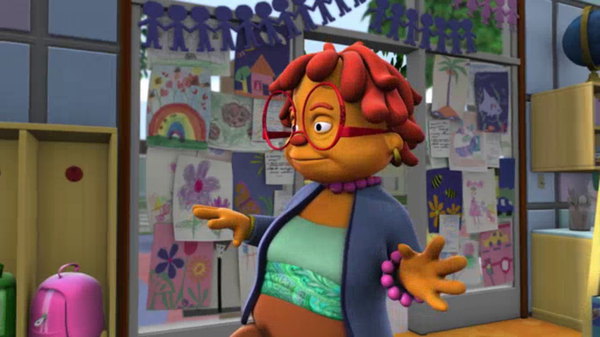 6 km combat dreadnought with 72 fighters and 9,000 airborne assault aircraft on board
6 km combat dreadnought with 72 fighters and 9,000 airborne assault aircraft on board
Location of : Star Wars universe
Balsavor
When diplomacy is not enough, nothing will defend our home system better than a fleet of battleships. And so it is worth remembering the good old Imperial-I - after all, no matter how much we love the Falcon, it is he who is the real star in the flotilla of the Distant Galaxy.
The Imperial I carries 37,000 personnel, of which 9,253 are officers. And that's not counting the additional landing force, combat fighters, transport shuttles and repair droids. The cruiser has enough provisions, fuel and supplies for 2 years of battery life.
On top of the Imperial, protected by shields, is a command bridge from which captains and admirals direct the battle. Below it are the cabins of the high command, even lower - the quarters for officers.
In the middle of the ship there are barracks for ordinary soldiers, rest and training rooms, as well as interrogation and detention cells.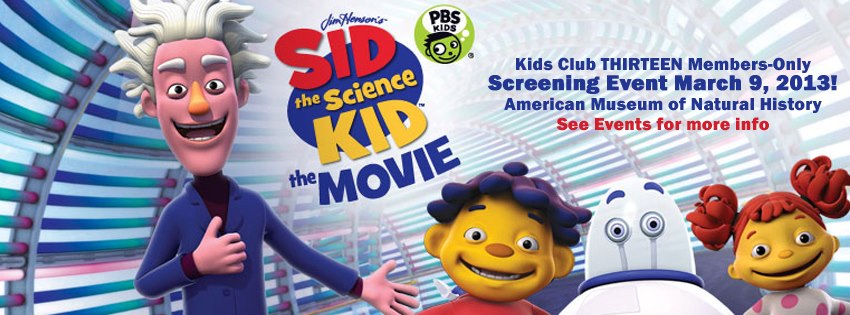 There is an internal security service on board, which strictly monitors the observance of discipline and the implementation of orders from the command.
There is an internal security service on board, which strictly monitors the observance of discipline and the implementation of orders from the command.
Separately, it is worth talking about the engines and the reactor in the stern of the cruiser. The Imperial, like the rest of the ships in the Star Wars universe, uses two types of engines.
To move faster than the speed of light, you need a hyperdrive, a device made from an alloy of titanium and chromium. With the help of hypermatter, antimatter or other source of energy, he is able to throw the ship into hyperspace - an alternative dimension in which you can "cut off" the distance.
The galactic community is built on the basis of hyperspace movements and known paths. In order for the crew to survive during the jump, the ships are equipped with inertia compensators. The shields protect the ship from deadly collisions with interstellar gas and cosmic dust. The quantum field generator keeps the ship from prematurely returning to real space.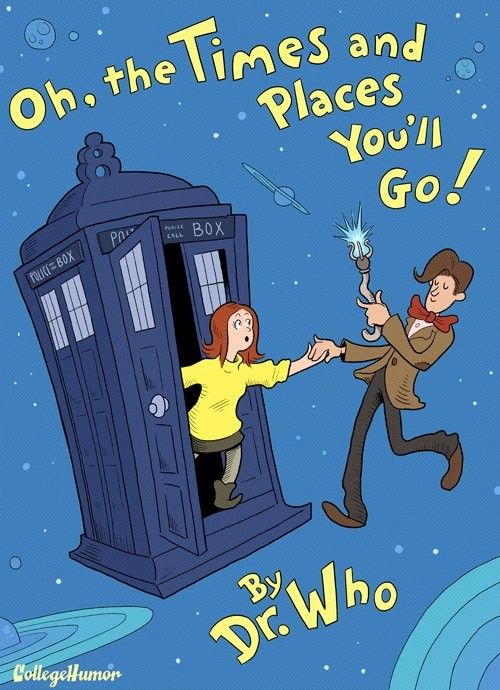 And a special device compensates for relativistic effects and maintains the normal flow of time.
And a special device compensates for relativistic effects and maintains the normal flow of time.
It should also be said that massive objects in reality cast hyperspace shadows - a collision with them is fatal. The exact travel time depends on the specific route, so in unknown places you can get lost for a very long time. And close to large objects, you can’t jump into hyperspace at all - you need to go beyond their gravitational influence. All this makes travel dangerous.
Warships like the Imperial can use this to their advantage - long-range scanners can detect an enemy as they approach, special generators can block hyperspace travel in a region, and a gravibeam can capture a specific ship.
Imperial warships otherwise use traditional methods of movement. 7 ion thrusters of the Signus Corporation create thrust that moves the Imperial both in space and in the atmosphere of the planet (in airspace they can move at a speed of 900 km / h).
Powers the solar reactor in the center of the ship. In fact, the cruiser uses the same solar panels as the TIE class fighter. Only this giant, among other things, contains inside its own source of energy - a miniature sun. Any malfunction in the power system can instantly vaporize the ship. The chamber with the star is so large that it does not fit in the cruiser's hull - its lower part sticks out like a convex hemisphere from below.
In fact, the cruiser uses the same solar panels as the TIE class fighter. Only this giant, among other things, contains inside its own source of energy - a miniature sun. Any malfunction in the power system can instantly vaporize the ship. The chamber with the star is so large that it does not fit in the cruiser's hull - its lower part sticks out like a convex hemisphere from below.
Technicians and scientists of the Galactic Empire have mastered the technology of gravity control: the ship has a gravity beam that can capture intruders, and artificial gravity on board. Perhaps, like smaller vehicles, the Imperial has repulsors that allow it to bounce off the surface and float in the air.
It is not known if the cruiser can land like its predecessors, but it can hover motionless over the city.
As a rule, Imperial-class ships patrol the borders of the Empire, catch interlopers and smugglers, and also participate in operations to suppress riots and maintain order in outlying systems.
Similar ships
First of all, "Imperial I" should be compared with " Venator " and " Reborn " - its predecessor and successor, respectively. Although we are not talking about a serious comparison: the Imperial I is 400 m longer, larger and better than the Venator in every way. And the 3-kilometer "Revived" will cope with both of them without any problems.
"Venator" developed the ideas of the Acclamator strike cruiser and was conceived primarily as a universal multi-purpose cruiser. Its distinguishing feature was a hangar in the upper part of the ship, intended to carry more than 400 fighters. The Venators were painted the diplomatic red of the Republic. After the formation of the Empire, they were repainted in strict gray.
But the "Revived" was built taking into account all the shortcomings of the "Imperial I". It carried insane firepower on board - more than 1500 turbolasers. More than 70 thousand crew members served it. The construction of such ships was financed by secret sponsors sympathetic to the remnants of the imperial fleet.
The construction of such ships was financed by secret sponsors sympathetic to the remnants of the imperial fleet.
The ships of the Distant Galaxy don't end there - there's also the Trade Federation armada, Rebel ships, private ships and relics from the Old Republic era. In general, they are united by practicality, a calm, everyday attitude to technology, the use of affordable and simple materials.
Accumulators, radiators, semiconductors, gas ionizers, chemical, thermal and nuclear reactors - the structure of the ships of the future is not much different from ours. And the more popular the technology, the easier it is for us to understand and accept it. We can personally evaluate the ingenious solutions of space technologies thanks to the album of official cross-sections, showing in detail the work of technology.
As for combat dreadnoughts, they can be found in almost every self-respecting space opera. Among the games is the fleet of the Citadel with " The path of destination "headed. " Pillars of Autumn " and the Covenant fleet in Halo. The lost fleet of Earth forces in Dead Space 3.
" Pillars of Autumn " and the Covenant fleet in Halo. The lost fleet of Earth forces in Dead Space 3.
Endless processions of merchant and warships in Series X and No Man's Sky. Descent, Wing Commander, hundreds of arcade shoot'em'ups and more. And that's not to mention online games like EVE, Elite: Dangerous and Star Citizen.
I would like to pay special attention here to the flagship of Raynor's Raiders " Hyperion " from Starcraft 2: Wings of Liberty. One of the best RTS games surprised us with a well-thought-out design of the flagship, where you can safely choose your next assignment on the bridge, do some parallel research in the laboratory, explore the arsenal of your own troops in the hangar, or just have a drink or two in the bar, listening to the latest news. Not forgetting to talk to every character you meet, of course.
But the flagships of the other two sides of the conflict - the protoss and the zerg - are not worse.
Did not bypass the military theme and anime. In fact, long before the popularization of the space opera on Western television, it was in Japan that several serious military space operas were filmed - our author Semyon Kostin devoted a separate material to this topic.
In fact, long before the popularization of the space opera on Western television, it was in Japan that several serious military space operas were filmed - our author Semyon Kostin devoted a separate material to this topic.
It is worth noting that Japanese animation was not limited by the technical possibilities, like game television, so the artists were able to show the battles in all their glory.
"Macross" and "Gundam" told the story from the point of view of pilots on sorties with inherent brutality and psychological trauma. "Battleship Yamato" showed a post-apocalyptic odyssey in search of a new home. And the biggest battles happened in The Legend of the Heroes of the Galaxy.
A real boom in space battles happened at the end of the century on television. It is worth remembering the political thriller "Babylon 5" with the memorable strike cruiser " White Star ", and the terrible Cylon fleet from Battlestar Galactica, and the flagships " Daedalus " and " Biliskner " from Stargate.
But the series "Space" coped best with space battles. In it, ships use realistic weapons - rockets and railguns, events take place in an airless space, where gravity and inertia must be taken into account, and radiation and vacuum kill no worse than lasers and torpedoes.
A rather unusual design of warships has developed in the Marvel Cinematic Universe. Its creators tried to move away from hackneyed images and used sharp, aggressive forms along with natural materials. As a result, many of them are remembered - that « Black Star " by Ronan, which is " Sanctuary II " by Thanos, which is the Dark Elf hive ship.
And yet, when it comes to powerful warships, the winner is obvious. In the dark future of the Warhammer 40K universe, only war awaits the occasional visitor. For thousands of years, the sacred Imperium of Mankind has been waging a bloody war against the forces of Chaos. The number of victims goes into the billions, and the parties do not hesitate to use the strangest types of weapons.
Star killers, artificial black holes, planetary viruses, warp bombs and finally - A fleet of sacred dreadnoughts of the Emperor, ready to wipe out entire star systems.
USCSS The Nostromo - utility industrial tractor
The number of crews : 7 people
grade : Ship Lockhid Martin CM-88B “Jaggernaut”
Armament : there is no
engine : Superflower tachy engines: 4 × “Yutani T7A NLS”, Milk : "Rolls-Royce N66 Cyclone" tubular type with a bidirectional thrust vector (thrust - 7.29million tons, or 64.9 giganewtons) - 2 pcs.; shunting "Weyland L46" (thrust - 850 thousand tons, or 7.6 giganewtons) - 2 pcs.; Yutani J38 external low thrust module with two sets of Lockheed Martin TL-30 engines
Ship device : private commercial starship tug
Origin : Alien universe
In fact, it is unlikely that in space humanity will get involved in a war. The main problem will be logistics and economics. And humanity will need just not marines, but hard-working miners.
And humanity will need just not marines, but hard-working miners.
Nostromo is a tugboat, 243 m long, 164 m wide. The ship itself weighs only 40 thousand tons, but on request it transports a processing platform 1 by 1.5 km with dimensions and a mass of 20 million tons. This is exactly what we see in the movie.
"Nostromo" has three decks with a rather complex interweaving of rooms. Among them: a bridge, suspended animation and medical compartments, a warehouse, a wardroom, an airlock, a reactor room and an engine room. Look at this very good analysis of the structure of the ship.
At the same time, the film itself willingly shares technical details. Thus, the ship operates on a deuterium-tritium fusion reactor "Laratel WF-15" with a capacity of 2.8 TW. It has superluminal and several sublight engines.
An empty ship can move at a speed of 153 light years (0.42 light years per day), together with a cargo - 0.10-0.12 light years per day.
Lv-426.ru
The ship is equipped with two-meter telescopes operating in the optical and infrared ranges, a gas chromatograph, a navigation and landing radar operating in the centimeter range, a surface-scanning radar with a synthetic aperture, and a hyperspace mass counter.
The ship is controlled by a MU/TH/UR 182 computer with 2.1 TB of memory and artificial intelligence, and there is also a backup mainframe with 2 TB of memory.
Nostromo has aerodynamic brakes, atmospheric stabilizers, landing legs and can land on the surface of planets and planetoids. The ship is equipped with space suits for staying outside the hull and an additional transport shuttle.
The crew consists of the captain and his assistant, warrant officer, navigator, mechanic, research officer and engineer. The ship is minimally controllable with four crew members.
The tasks of the team included loading and unloading goods, taking off and landing on the planet, flight and repair work. The estimated duration of the mission is 14 months, the maximum autonomy is 24 months.
What the crew didn't know - so the ship has a secret protocol from the Corporation in case of an unexpected First Contact.
Nostromo is a prime example of a serious, measured approach to science fiction. Even if not all the details are meticulously calculated, even if a few things like artificial gravity and superluminal movements remain without explanation, the ship creates a convincing image.
Even if not all the details are meticulously calculated, even if a few things like artificial gravity and superluminal movements remain without explanation, the ship creates a convincing image.
It really looks like a vehicle that people will use in their daily routine.
Similar ships
"Nostromo" is associated primarily with the silent tragedy that happened within its walls. There were several other ships with a similar fate - Event Horizon , which unsuccessfully tested an interdimensional drive, and Von Braun , which set off on a secret assignment from the Trioptium Corporation. But most of all, the fate of the Nostromo is reminiscent of what happened on the mining ship " Ishimura " from Dead Space.
USG Ishimura
The creators of USG Ishimura can be accused of copying too much, but they compensate for the lack of originality with the design and development of all decks - engineering, medical, transport compartment, bridge, hold, personal quarters. And the mixture of the industrial environment with the gloomy gothic of the ship's frame is remembered no less than the design of Syd Meade.
And the mixture of the industrial environment with the gloomy gothic of the ship's frame is remembered no less than the design of Syd Meade.
Station "Sevastopol"
In the Alien universe itself, a lot of places convey a piece of Nostromo's mood - and the warship " Sulaco ", and the Fiorina prison, and even the research shuttle " Prometheus " - but it turned out best at the reference station " Sevastopol " orbiting the gas giant KG-348, from Alien: Isolation.
The ship closest in spirit and purpose to the Nostromo is DS-12 "Toy Box" from the anime Planetes. It tells about the everyday life of people who are forced to clean up debris in near-Earth orbit. The anime clearly shows that in the foreseeable future in space, people will not have adventures, but hard, painstaking work. Where carelessness, vacuum and radiation can kill just like aliens with blasters.
Serenity - medium sized private ship
The number of crew : 15 crew members, 36 passengers
grade : Svetlyachki medium -fashion transport ship
Armament : there is no
engine : Standard radio accelerator
from : Series Svetlyachny
Serenity is an ordinary medium-sized cargo ship. Several decks, bridge, hold, engineering department. Of the payload - two remotely controlled "mules" and a magnetic lock.
Several decks, bridge, hold, engineering department. Of the payload - two remotely controlled "mules" and a magnetic lock.
A somewhat rough shape with a characteristic "beak" is needed for carrying cargo and docking with auxiliary shuttles.
Two Blue Suns compression engines enable vertical takeoff and landing. The maximum flight range is 400 astronomical units. The maximum carrying weight is 74 tons.
At first glance, these dry characteristics are not unusual. But the essence lies in the details.
Serenity is one of the most elaborate and detailed private frigates in the galaxy. A diverse crew, with unusual histories and beliefs, gradually gathered on board, and each brought a bit of individuality. Take a look at these fan-made cuts of the ship - you can look at them endlessly.
Serenity is also about freedom. The opportunity to fly about your business, wherever your eyes look, in the company of interesting satellites. And while the series is stingy with technical details, it was precisely this kind of individuality that many ships lacked.
Similar ships
There are a lot of ships similar in description to Serenity. Of course, you need to remember about " Millennium Falcon ", an old favorite wreck, on which you can easily cut the Kessel arc in 12 parsecs. With its iconic indestructible anti-aircraft gun, characteristic engine and holographic chess. And together with the "Falcon" we will also mention Ebon Hawk , for someone no less personal ship.
On the other hand, for many it may be closer to SSV Normandy , both of its variants. Bioware has done a good job of modernizing the stereotype of a medium-sized personal ship - the Normandy feels both quite mundane and self-contained.
Multiple decks, shields, airborne railgun, rover, levitating tank or shuttle to choose from. On the Normandy, you can visit everything - from the bridge and cockpit, to the dining room, medical unit and engineering department.
It also has relatively modern technologies, such as quantum communication. But of course, you will remember the Normandie as much as you become attached to its crew. That is, most likely for a long time.
But of course, you will remember the Normandie as much as you become attached to its crew. That is, most likely for a long time.
If you've ever heard of the adventures of Spike Spiegel and his team of bounty hunters, you'll also know about his ship, Cowboy Bebop . To call it a classic adventurer's ship is out of the question - "Bebop" is the element, jazz, freedom and "blues of real men."
It may well be that you like its more modern "version" - the beautiful ship " Milano " under the leadership of the Star Prince. Or Star Knight, whatever.
And for someone, despite all the postmodernism and irony, the ship " of the Interplanetary Express " and its passengers from "Futurama" have become truly native. After all, any captain knows - the main thing is the crew. For a space traveler, he can become a real family.
"Axiom" - a ship of generations for thousands of people
Crew : unknown
Class : generation ship
Armament : energy weapons
Engine : unknown
Location : Wall050
"Axiom" is the salvation of mankind. The last island after the destroyed Earth, where you can live. And life seems to be pretty good.
The last island after the destroyed Earth, where you can live. And life seems to be pretty good.
Although Wall-E seems like a children's cartoon, many other works of science fiction should learn from it. The main problem is very serious - not only did humanity destroy the Earth, it does not want to be responsible for anything, leaving all the work to robots.
The AI, represented by the on-board assistant AUTO, has been doing all the work on the ship for several centuries. Cleans, cooks and makes sure that people live comfortably.
To do this, he has an army of responsible droids - some serve people, the second repair the ship, the third deal with service systems, and the fourth study the surroundings. The ship also has a system of hydroponics, waste processing, water filtration.
If you cut out the satire, you get a very interesting concept of a self-sustaining ecosystem where humanity can hide and wait out the catastrophe.
Another purpose of such a ship is to survive a journey to another habitable system if it takes several decades.
Similar ships
The idea of a ship of generations is often found in literature, but in other forms of fantasy it did not work out very well.
Movies include " Elysium " from the horror movie "Pandorum" and " Avalon " from the movie "Passengers", although both performances are not well thought out.
Avalon
You can also mention the ships from the Homeworld series, which were the last refuge of the people whose planet was destroyed. In Mass Effect Andromeda, arks carried colonists to another galaxy for 600 years.
Mother ship in combat
But the closest to the ships of generations in meaning and spirit is battle cruiser "Galaktika" from the series of the same name. The last stronghold of humanity, where refugees who survived the atomic holocaust hid. And let their situation look desperate, in fact, the Galaxy cruiser is a symbol of endurance and unbroken will.
Galaxy
Let the stories of most ships of generations with an admixture of sadness, I wonder if they can someday become a real, permanent home for earthlings.
"Secret Archives Section 31" - the most unusual and experimental models
Next we will talk about the most dangerous and strange spaceships. Perhaps it was sheer stupidity to create them. Or maybe they are the only key to saving humanity from unknown threats.
Rick's space boat from Rick and Morty
It is not known how, where, and what power created this device, designed to travel between worlds. He has an arsenal on board, capable of repelling any potential threat, and in the chair is a body-swapping device, and in the trunk is a pocket microverse.
Lexx
" Lexx ", he is also a giant living starship, he is also the most destructive weapon of the two universes, he is also a big talking dragonfly. Helps people in solving existential crises.
Helps people in solving existential crises.
Moya
In the Farscape series, it has a distant relative, the living leviathan ship Moya .
Pepelac
Pepelac is a mysterious device that roughly translates to "car". It is known that it can fly, and with a gravitap - fly into space.
"Golden Heart"
« Golden Heart " from The Hitchhiker's Guide to the Galaxy is a legendary ship that uses the principle of improbability to travel across the galaxy. A beautiful pearl worthy of being in the heart of any space fleet, if not for our last ship in the selection.
"Tardis" - space and time machine
Crew : Unknown
Class : Space Time Vessel
Armament : Hostile Traverse System, Temporal Truce Status
Engine : Dematerializer
From : Doctor Who
The Tardis is a living transcendent time ship.






